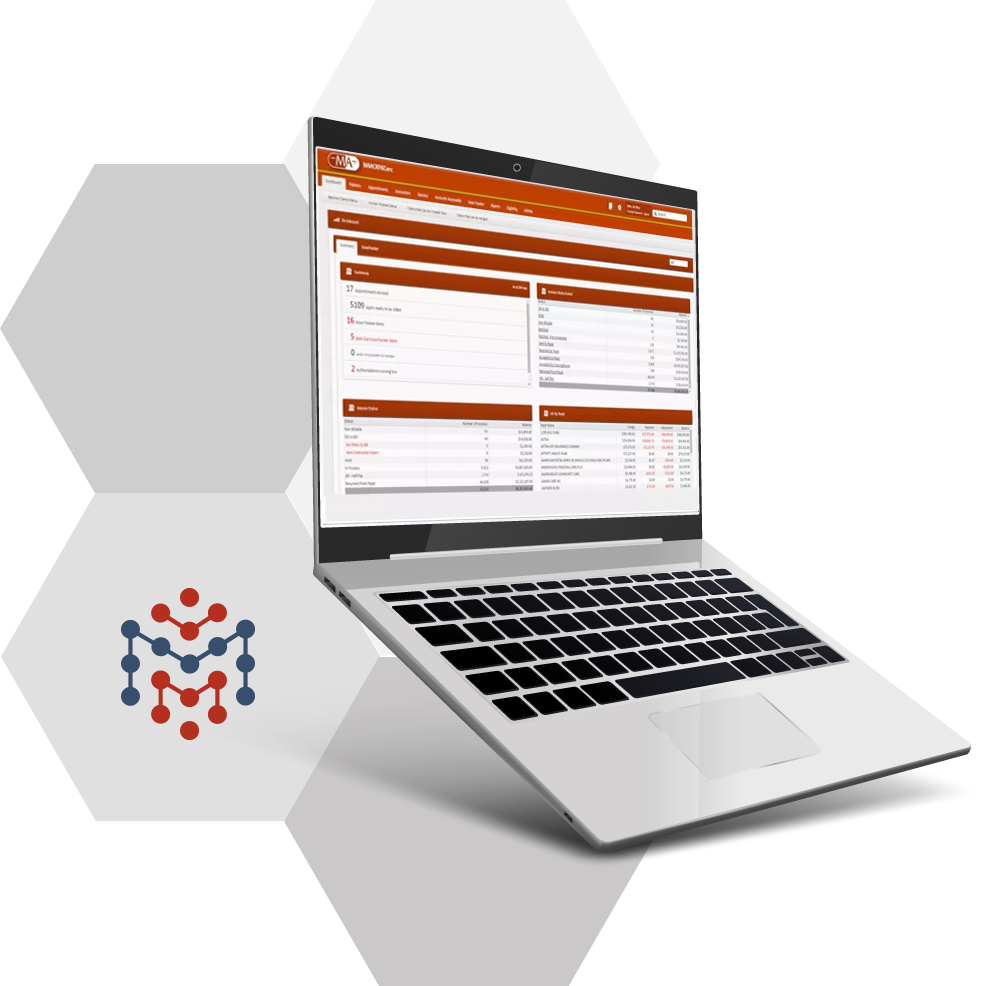
Following a recent initiative, Social Care Networks have been established to provide a path for Managed Care Organizations to reimburse for non-medical services. Millin is deeply familiar with health and human services billing, and will work with your network to ensure a smooth revenue cycle.
Navigating all the rules and requirements of this initiative can be daunting, but with Millin, you can be confident that your claims will be submitted accurately and your revenue stream will remain strong. Request a demo today to see Millin's work in action.
As value-based payment (VBP) has emerged as the results-driven healthcare payment model of the future, providers have been shifting their focus to emphasize performance. New initiatives have sprung up across the U.S. to put more focus on expanding services and quality of care, and Social Care Networks (SCNs) are part of one such initiative. With Managed Care Organizations (MCOs) around the country taking a larger role in healthcare reimbursement, the SCN initiative offers a way for MCOs to reimburse healthcare providers for non-medical services.
Historically, individuals who have access to a stable home life, transportation and education on self-care such as nutrition respond better to services in a facility, and are more likely to maintain a healthy lifestyle on their own. This substantially decreases the risk of severe medical conditions such as diabetes, liver failure and heart problems while reducing hospitalizations and complex surgeries.
Through a competitive selection process, SCNs are chosen to team up with regional Community Based Organizations (CBOs), healthcare providers and other community advocacy organizations to begin providing these Health Related Social Needs (HRSN) to individuals who qualify via the SCN screening process. This major undertaking requires relationships with these CBOs, as well as new staff and technology to manage the process.


Millin has been at the forefront of the medical billing process for health and human service agencies for over 40 years. For SCNs working to navigate the healthcare billing system here, we bring all the necessary tools, expertise and experience to ensure consistent revenue and cash flow. Among the responsibilities we can help SCNs with are:

Millin has been at the forefront of the medical billing process for health and human service agencies for over 40 years. For SCNs working to navigate the healthcare billing system here, we bring all the necessary tools, expertise and experience to ensure consistent revenue and cash flow. Among the responsibilities we can help SCNs with are:
Millin has been at the forefront of the medical billing process for health and human service agencies for over 40 years. For SCNs working to navigate the healthcare billing system here, we bring all the necessary tools, expertise and experience to ensure consistent revenue and cash flow. Among the responsibilities we can help SCNs with are:
MillinPro’s rules engine is uniquely configured to handle new reimbursable services and goods, as well as to ensure it captures all the nuances that each payer requires for claim submissions – and these can vary widely from payer to payer. Our business analysts keep tabs on all regulatory and payer changes, updating the rules engine accordingly and in a timely manner.
The system's real-time updates ensure full transparency between SCNs and CBOs. SCNs can provide CBOs access to their claims journey – from submission to the payer, to the payer's payment response, to the payment from the SCN to the CBO. In addition to building trust and accuracy, this functionality significantly reduces the need for calls and emails between CBOs and SCNs.
Unlike many billing systems, MillinPro offers the ability to create reports and check them for accuracy. As results-based outcomes rely on data and analytics to show patterns and trends in performance, the ability to track HRSNs, claims and revenue across all payers and CBOs is crucial in determining an SCN's effectiveness and financial health.
MillinPro's ability to integrate with other systems is second to none. It's easy for the system to absorb data from other systems and to transfer data from MillinPro to additional systems that need to communicate with each other.
For a more comprehensive billing solution, Millin partners with agencies such as SCNs to handle their entire revenue cycle management process. Our outsourced billing services can handle the difficult internal work of SCNs, ensuring they have the time and energy to focus on the challenges of establishing and running their networks.
A wise person once said: “If it’s not my core business, I outsource it to the experts. One less headache to deal with.”


For a more comprehensive billing solution, Millin partners with agencies such as SCNs to handle their entire revenue cycle management process. Our outsourced billing services can handle the difficult internal work of SCNs, ensuring they have the time and energy to focus on the challenges of establishing and running their networks.
For a more comprehensive billing solution, Millin partners with agencies such as SCNs to handle their entire revenue cycle management process. Our outsourced billing services can handle the difficult internal work of SCNs, ensuring they have the time and energy to focus on the challenges of establishing and running their networks.
A wise person once said: “If it’s not my core business, I outsource it to the experts. One less headache to deal with.”
Read LessUnder the proposed SCN guidelines, HRSN services eligible for reimbursement are broken down into three major categories: housing, nutrition, and transportation. The non-medical services listed below represent just some of the care available through CBOs and healthcare providers.

The ability to have full transparency into the lifecycle of claims is a critically important part of the revenue cycle management process for healthcare providers. This includes information such as where your claims are in the pipeline, what’s been paid, what’s outstanding and what’s been denied. Putting all this information together provides a complete picture of the success and shortcomings in your billing cycle, giving you more details on your revenue and cash flow.
This information is especially important as SCNs introduce another level of tracking transactions. With the introduction of potentially hundreds of CBOs under one SCN – exchanging client information, HRSN data and revenue – it's crucial to have a system that can provide insight and real-time data at a detailed and aggregate level.

The ability to have full transparency into the lifecycle of claims is a critically important part of the revenue cycle management process for healthcare providers. This includes information such as where your claims are in the pipeline, what’s been paid, what’s outstanding and what’s been denied. Putting all this information together...
The ability to have full transparency into the lifecycle of claims is a critically important part of the revenue cycle management process for healthcare providers. This includes information such as where your claims are in the pipeline, what’s been paid, what’s outstanding and what’s been denied. Putting all this information together provides a complete picture of the success and shortcomings in your billing cycle, giving you more details on your revenue and cash flow.
This information is especially important as SCNs introduce another level of tracking transactions. With the introduction of potentially hundreds of CBOs under one SCN – exchanging client information, HRSN data and revenue – it's crucial to have a system that can provide insight and real-time data at a detailed and aggregate level.
Read LessBecause SCNs, along with the proposed method of billing and reimbursement, are so uniquely structured, it's difficult for vendors to get a full picture of these programs' financial health. Many vendors that have RCM components as part of their larger case management or referral platform don't have the capability to provide that picture, so they do just enough to satisfy the bare minimum when they submit a claim to a payor.
Millin, by contrast, is configured specifically to handle this level of complexity. We have years of experience dealing with managed care payors, and our MillinPro software is designed to provide tracking, analysis and reporting across a large network of payors, each with its own unique billing rules and regulations. We have whole departments of experts on standby, ready to configure new billing requirements in our system.
The inclusion of a screening process prior to an individual’s admittance into the SCN will be a core focus of the launch of HRSN services through the CBOs. Every member of the network will be screened, and the data is used to determine and track social risk factors and demographic data, creating an authoritative source for figuring out who is eligible for which services and in what capacity. Demographic and screening information can be shared in real time, and over time, the data is used to enhance quality of care and services.
As the goals of an SCN include maximizing efficiency, increasing reimbursement and improving general RCM workflow, a system like Millin – a niche product designed specifically for these types of services – is the only way to ensure those goals are met. Our integration capabilities go well beyond those of any industry-standard EHR, which focus most of their time, money and development on improvement of their medical records. It's rare for these systems to have the bandwidth to improve billing, tracking and reporting functionality, but Millin does.
SCNs need to prove financial viability and independence, and Millin's built-in Accounts Receivable module is designed to record data related to claims and payor trends, as well as recognize gaps in parts of the RCM process. The financial data available through the MillinPro system can be divided up in hundreds of different ways, making it ideal for ongoing real-time analysis – particularly when it comes to data related to claims, payments, reimbursement and revenue.
As we do with many other clients who happen to be Health Homes or IPAs, we can provide reports that can be uploaded to various data warehouses, offering an opportunity to get even more analytical with the data.
Key to the success of the Millin platform are its integration capabilities and flexibility with existing software, which offer significant advantages moving forward for SCNs. Among the program's capabilities are:

After an individual is screened, a decision must be made as to whether they need HRSN services or regular community-based services. This determination of eligibility is made at the SCN level. Not only is the SCN in charge of screening, it's also home to all of the demographic information for individuals receiving services.
...
After an individual is screened, a decision must be made as to whether they need HRSN services or regular community-based services. This determination of eligibility is made at the SCN level. Not only is the SCN in charge of screening, it's also home to all of the demographic information for individuals receiving services.
Eligible recipients of the new HRSN services through the SCN include the medically fragile or vulnerable population, including:
Historically, cost of care for the above groups tends to be higher than for the population at large. Through performance-based outcomes, SCNs aim to collect enough data for providers to understand which individuals and groups respond best to which services. The goal here, as with value-based reimbursement, is to put responsibility for providing the highest quality of care on providers and CBOs.
Read Less
After an individual is screened, a decision must be made as to whether they need HRSN services or regular community-based services. This determination of eligibility is made at the SCN level. Not only is the SCN in charge of screening, it's also home to all of the demographic information for individuals receiving services.
...
After an individual is screened, a decision must be made as to whether they need HRSN services or regular community-based services. This determination of eligibility is made at the SCN level. Not only is the SCN in charge of screening, it's also home to all of the demographic information for individuals receiving services.
Eligible recipients of the new HRSN services through the SCN include the medically fragile or vulnerable population, including:
Historically, cost of care for the above groups tends to be higher than for the population at large. Through performance-based outcomes, SCNs aim to collect enough data for providers to understand which individuals and groups respond best to which services. The goal here, as with value-based reimbursement, is to put responsibility for providing the highest quality of care on providers and CBOs.
Read LessFor SCNs, selecting the right RCM vendor is crucial to ensuring data integrity and billing transparency. The Millin system has been configured to handle Medicaid, Medicare, MCO, and commercial payors for behavioral health and IDD services. Critically, it's designed with a rules engine that is continuously updated as payor rules and regulations evolve – and experts expect the first few years of the SCN system to be filled with constant changes in billing guidance and reimbursement.
An SCN consists of Medicaid providers and may contain dozens of CBOs in some instances, and though the SCN oversees the progress of program eligibility across the network, CBOs are responsible for providing the HRSN services. CBOs must also bill, track and report on claims for all services and all individuals at all of their respective facilities, generating claims and sending them on to the SCN to submit. MCOs play a vital role here, processing claims and paying SCNs directly.
Though rates and reimbursement have yet to be determined, regulations have emphasized the importance of tracking, monitoring, evaluating and embedding payments into a premium in the future. With all of these moving parts, Millin's expertise is invaluable for SCNs. Our RCM software focuses specifically on the tracking and reporting of claims across a network of payors and CBOs, making it far easier to determine the financial health of an SCN.
SCNs face unique challenges navigating the revenue cycle, but the right RCM software can turn those challenges into opportunities for growth and streamlined operations. Millin offers a specialized solution, designed for the health and human services sector, to unlock the full potential of SCNs' financial processes so they can provide better care to their communities. When you work with us, you work with a trusted partner in financial operation and overall RCM efficiency. Book a demo with us today to see our system in action.
With over 40 years of Health & Human Services billing experience and expertise, we can help increase efficiencies and reduce or even eliminate denials. Experience Revenue Cycle Management Software & Services from the Company You Trust.
303 Merrick Road Lynbrook NY 11563 | +1 516-374-4530 | Solutions@millinmedical.com | Privacy Policy